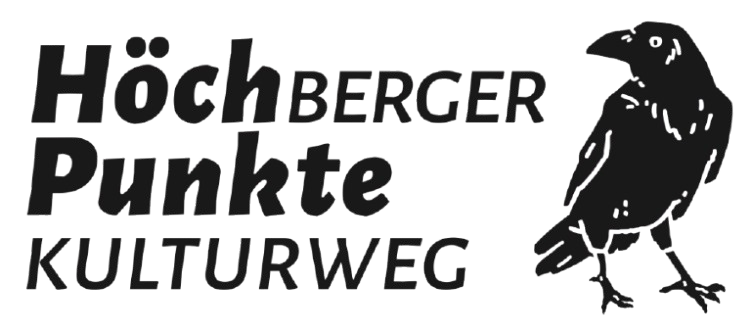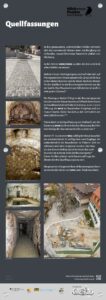Höchberger Well Rooms
Höchberg spring water for the Würzburg prince-bishops
From 1320 to 1670, the Marienberg fortress was supplied with water from the Höchberg springs for 350 years. The water was channelled underground via a pipeline made of lead pipes to the castle courtyard.
Würzburg Castle had two cisterns and a deep well. However, the well from the Main made it difficult to pump a sufficient quantity of water. Larger quantities of fresh water were only supplied under Bishop Gottfried of Hohenlohe and were channelled from Höchberg to the fortress. The construction of the water pipeline was a highlight of his term of office (1317 – 1322).
However, the amount of water was not sufficient to cover the entire needs of the fortress. The water was therefore stored at night in cisterns and ponds and used for watering cattle and as a supply in case of fire.
Route of the water pipeline
The water pipeline probably ran down Brunnengasse, along Hauptstraße, Bundesstraße (B 8 / B 27) and Höchberger Straße to Oberer Burgweg and from there to the fortress.1
Strips of lead sheet were bent into the shape of pipes, overlapped and soldered or folded and soldered. The lead pipes lay in a brick channel with a cover, sometimes also in a half-shell fired from clay with a cover. The length of the lead pipes to the castle was approximately 3.7 km.
To this day, water flows from the mountain in Höchberg into the old underground spring wells. They feed the Weed and the two running fountains at the top and bottom the upper and lower ends of Brunnengasse.
The water tunnels are 292m and 278m above sea level, the outlet at the castle courtyard at approx. 267 m. With a height difference of between 11m and 25m, the water pressure was between 1.1 to 2.5 bar.
(Image text) The municipality of Höchberg restored gallery II in 2019 and returned it to its original condition. 2, 3 , 4 , 10
Spring trenches
In three brick-built, underground tunnels, the escaping water from a water-bearing clay layer that breaks off on the mountainside is collected south of Höchberg.
The three underground tunnels were surveyed in 2002 / 2003.
Gallery I is the highest and is located on private estate in Sonnemannstraße. It still feeds the upper well and the Weed today. The water for the stream on Brunnengasse also comes from this source. The limestone masonry is still in
very good condition.6
The entrance to gallery II is located in Brunnengasse next to the round water basin on public land. There is an approx. 0.6 m × 0.6 m opening in the top of the vault, which was uncovered and walled up during construction work in 2019. This is probably a draw well.7, 8
Above ground, the source of Gallery II has been recognizable since the 2019 renovation due to a dark marking on the Sonnemannstraße road surface. 5
Gallery III was only rediscovered by chance in 1985 during sewer construction work. It has two entrances, which were probably closed during construction work in earlier times and then forgotten. The water from this tunnel still feeds the running fountain at the lower end of Brunnengasse.9
Based on its construction and location, this tunnel appears to be the oldest of the three spring tappings. The entire facilities in the Brunnengasse / Sonnemannstraße area have been a listed building since 2011.

